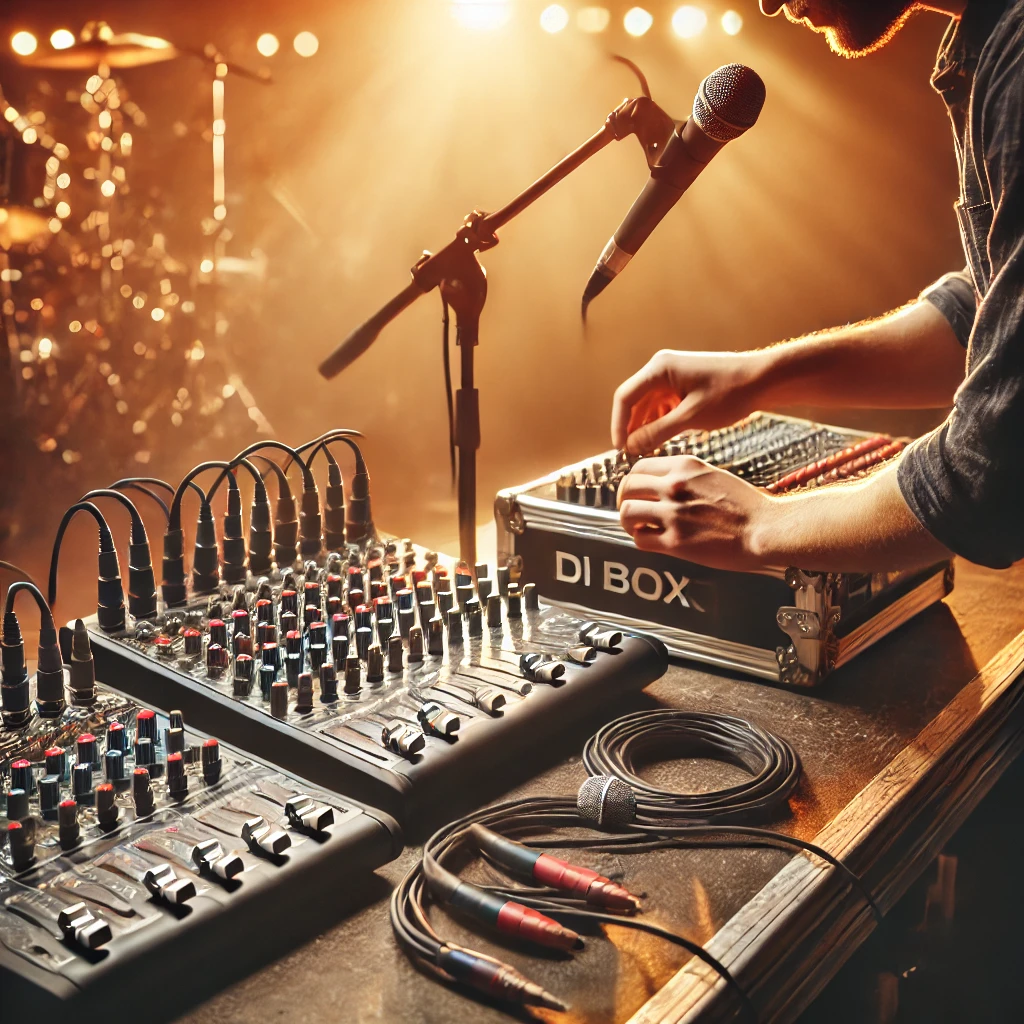The Complete Guide to Microphones and DI Boxes for Live Sound Engineers
When it comes to live sound, choosing the right microphone for each instrument and setting up DI boxes correctly can make or break your mix. With the wide variety of mics available, knowing how and when to use each type is essential for a clean, balanced sound. Here’s a comprehensive guide to understanding the essentials of microphones and DI boxes in live settings.


Dynamic Microphones: The Workhorses of Live Sound
Dynamic mics are the most common type you’ll encounter in live venues. They’re durable, versatile, and ideal for loud environments.
Shure SM58: This mic is a go-to for vocals. It’s reliable, rugged, and delivers a warm, solid sound. You’ll find it in almost every venue, and most vocalists will feel comfortable using it.
Shure SM57: Very similar to the SM58, the SM57 works well on instrument amps, snare drums, and brass instruments. Its compact design and clear frequency response make it easy to EQ and place on various instruments.
Kick Drum Mics: Capturing Low-End Punch
Kick drums require mics that can handle low frequencies and high sound pressure levels. In most venues, you’ll come across these options:
Shure Beta 52A: Known for its full, powerful sound, the Beta 52A is an industry standard for kick drums.
Audix D6: This mic has a similar shape and sound profile to the Beta 52A, delivering a deep, punchy kick tone.
Boundary Mics: The Shure Beta 91A, a boundary mic, is often placed inside the kick drum for extra attack and clarity. Pairing a Beta 91A with an external kick mic like the Beta 52A can yield a rich, layered sound.
Microphones for Toms and Overheads
Capturing toms and cymbals requires a mix of durability and clarity. These mics are commonly used:
Clip-On Toms Mics (Sennheiser 604): These low-profile mics clip directly onto the drum’s rim, making them ideal for toms. Their design minimizes interference, keeping the setup clean and effective.
AKG C451B: Often used for high hats, this small-diaphragm condenser mic provides detailed sound capture without taking up too much space.
AKG C414: A large-diaphragm condenser mic with switchable polar patterns, the C414 works well on overheads or brass, offering clear, full-spectrum sound.
Specialty Mics: Vocals and Instruments
Certain mics are designed for specific applications. Here are a few specialty options that you may encounter in live settings:
sE Electronics V7: This mic has been gaining popularity as an alternative to the SM58. It offers more clarity and handles feedback better in noisy environments. The V7 requires closer mic technique, so be sure to give vocalists a quick tutorial.
DPA 4099: This clip-on condenser mic is ideal for stringed instruments and brass. With a range of attachments, it can be mounted on various instruments and delivers rich, accurate sound.
DI Boxes: Converting Signals for the Mix
DI boxes are essential tools in live sound, helping to integrate various instruments into the main mix. They’re used to convert high-impedance, unbalanced signals from instruments into low-impedance, balanced signals that are compatible with XLR inputs.
Active DI Boxes: These are best for unpowered instruments like guitars and basses. Active DI boxes provide a clean, boosted signal, ideal for high-quality sound transfer.
Passive DI Boxes: Ideal for line-level sources like keyboards or computers, passive DI boxes don’t require external power and handle signals from powered devices well.
Tip: DI boxes improve clarity and reduce noise, especially over longer cable runs, making them a critical component for professional sound.
Final Thoughts: Match the Mic to the Sound and Venue
Choosing the right mic isn’t just about price; it’s about finding the best match for the instrument, space, and sound quality you’re aiming for. A condenser mic, for instance, may capture amazing detail but can struggle in spaces with challenging acoustics.
In each venue, take time to understand the available equipment and experiment to find what works best. No matter how much experience you have, there’s always more to learn and refine in the ever-evolving world of live sound.
